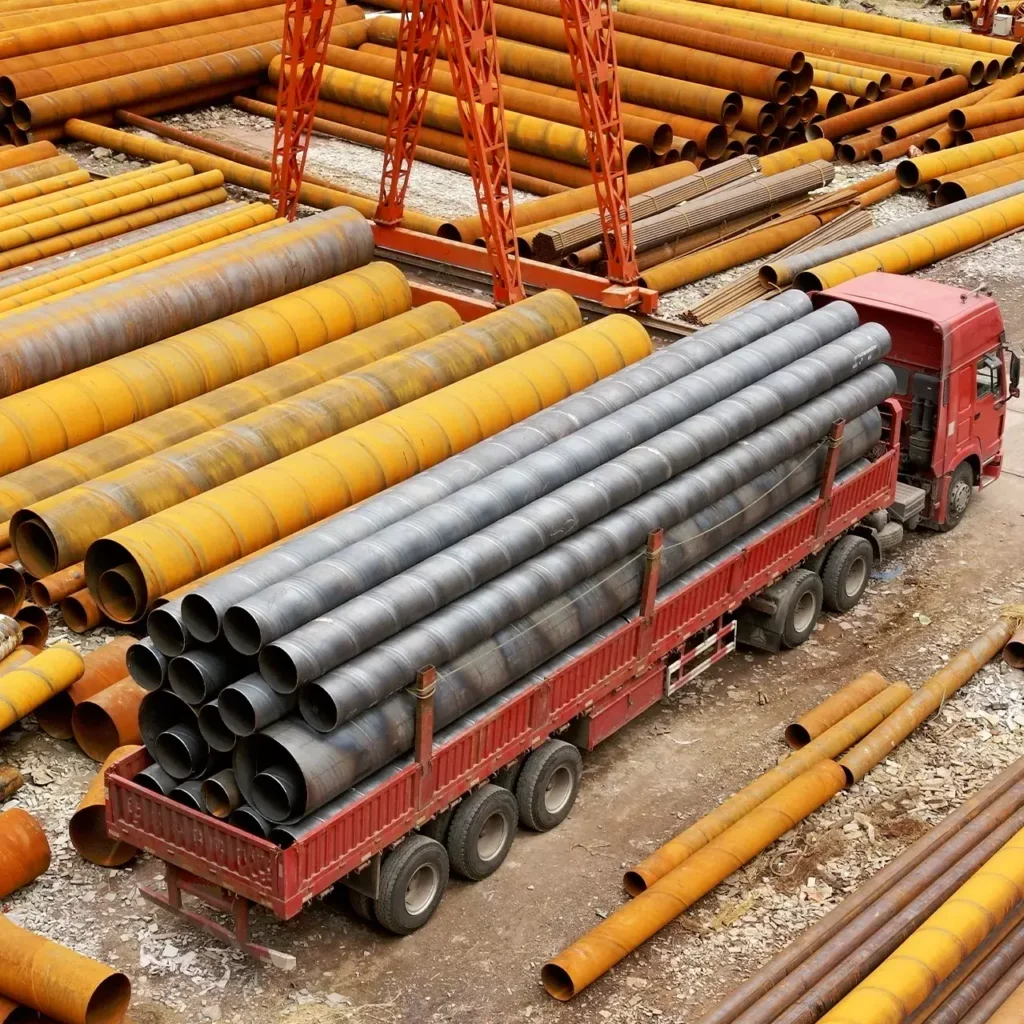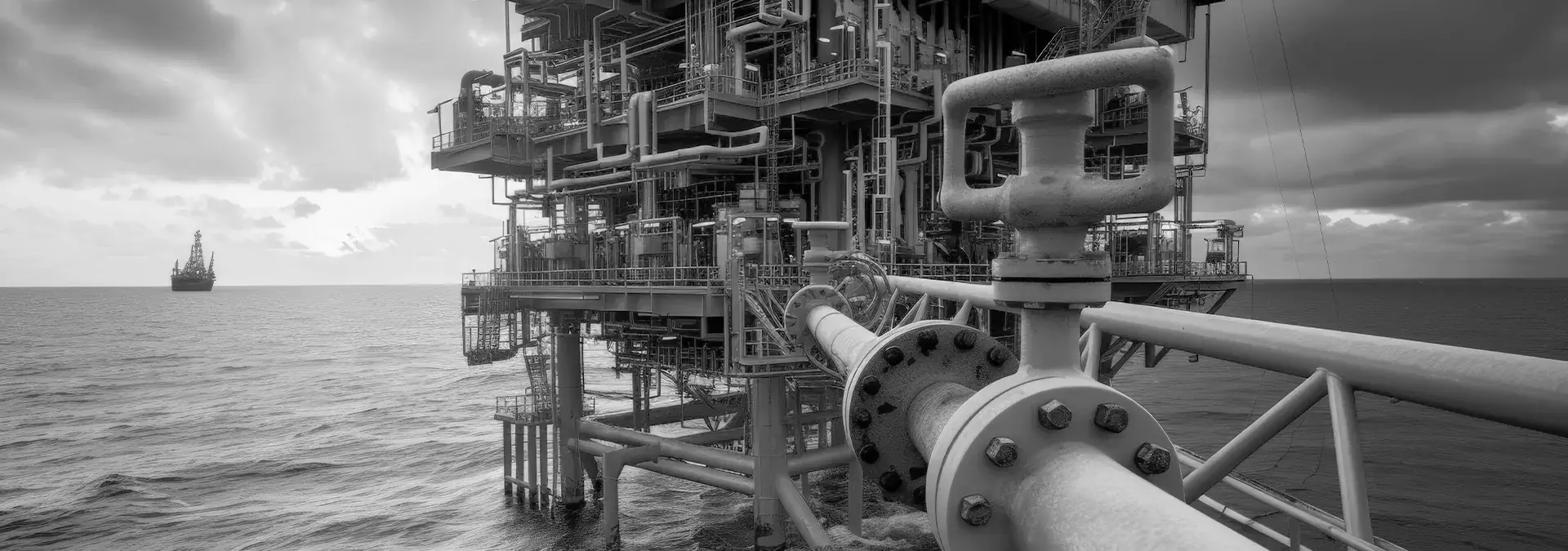Introduction
The offshore pipeline industry is expected to increase rapidly over the next decade, meaning that pipe and fittings suppliers in the UAE and beyond need to be ready. This projected growth will be spurred by global demand for gas and recent cost reductions actualized by important technology improvements – making more deepwater and ultra-deepwater reservoirs viable for development. However, high installation and maintenance costs of offshore pipelines, as well as environmental concerns related to offshore drilling and pipeline operations, are anticipated to impact the overall market growth.
In 2021, global natural gas production was estimated to be 3,854 billion cubic meters. North America led production with about 1,110 billion cubic meters, followed by the Middle East and Africa, which produced 918 billion cubic meters.
In this article, we will have an introductory look at offshore piping systems, and the available pipes and fittings resources to address their challenges, while ensuring that the entire hydrocarbon transportation network is a safe, efficient, and environmentally responsible operation.
Types of Offshore Pipeline System
Offshore pipelines and pipe system applications across oil & gas, as well as power & desalination, are predominantly made of steel, including carbon steel, alloy steel, stainless, duplex, super duplex, and high-grade alloys. Fiberglass coated with epoxy pipe systems can also be designed for special applications, but steel pipes remain the industry norm.
The main types of offshore piping systems are:
- Seamless (SMLS) Pipes: Seamless pipes don’t have weld, and hence don’t have additional longitudinal weld hardness. This type of pipe has high flexibility, and many of the grades of seamless pipes are suitable for low-temperature liquids or gases.
- High-Frequency Welded (HFW) Pipes: High-frequency welded pipes (conductive or inductive) These pipes are accurate in dimension, length, and wall thickness.
- Submerged Arc Welded (SAW) Pipes: Submerged arc welded pipes are available in different diameters ranging from 16” to 64”. These weld pipes are manufactured from flat plates by bending them to form a circular section.
Corrosion Resistance
Carbon steel structures exposed to offshore waters in hot climates generally corrode at accelerated rates and require additional preventive measures to be taken. Corrosion can be reduced or prevented by providing cathodic protection (CP), or by using a fiber-bonded epoxy coating or other type of corrosion resistance treatment.
Pipe-in-pipe is another alternative for addressing internal and external challenges to an offshore pipe system, and consists, as the name implies, of a pipe installed inside another pipe (where, for example, the outer pipe provides thermal insulation for the inside pipeline in cold/deep water, thus preventing wax and hydrate formation.)
Logistics

The same installation methods and constraints apply offshore as to all other steel pipe applications but ultimately require more extensive logistical support from pipe suppliers.
In addition, logistics concerns play a critical role, and pipe cost estimation models and delivery schedules must align with installation teams and available fittings, accessories, and specialized installation equipment.
Steel pipes are normally supplied for offshore installations in single joints of standard 40 ft length, or lengths of double joints (80 ft) or triple joints (120 ft).
Cost Estimation
Offshore pipeline construction costs are commonly categorized according to engineering, materials, and services. Material and installation services contribute the majority of a project’s cost. Each work section has to be reverse-engineered to itemize work requirements and determine the aggregate costs of each sub-system. Work decomposition techniques break down operational activities into a series of tasks that when combined with the estimated duration and vessel day rates, yields cost estimates for the activity. Clear project definition, the experience of the estimator, and the support of a local pipe system supplier knowledgeable and experienced in the job requirements and market conditions are usually the most important factors in reliable cost estimation.
Conclusion
The offshore pipeline industry is poised for significant growth in the coming years and faces a complex array of challenges and opportunities. As global demand for natural gas and other resources surges, the industry must navigate high installation and maintenance costs, environmental concerns, and the technical complexities of operating in harsh offshore environments.
The successful development of offshore resources hinges on the industry’s ability to effectively address these challenges, ensuring safe, efficient, and environmentally responsible operations. As technology continues to advance and market dynamics evolve, the offshore pipeline sector must adapt and innovate to meet the growing global energy demands while maintaining its commitment to sustainability and environmental stewardship.
To speak to an expert about the piping requirements for your upcoming offshore project, contact us today.


